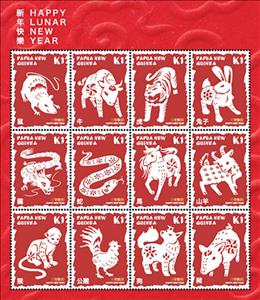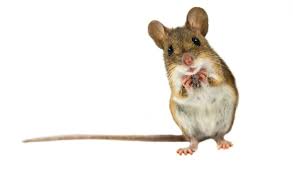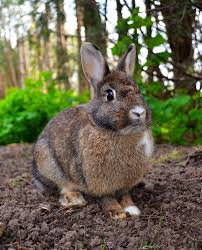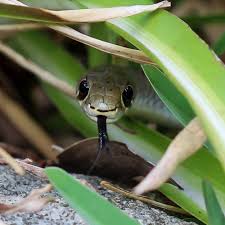Mini Sheet: Year of the Pig 2019 (Papua New Guinea 2019)
Year of the Pig 2019 (Papua New Guinea 2019)
31 January (Papua New Guinea ) within release Year of the Pig 2019 goes into circulation Mini Sheet Year of the Pig 2019 face value 12*1 Papua New Guinean kina
| Mini Sheet Year of the Pig 2019 in catalogues | |
|---|---|
| Colnect codes: | Col: PG 2019-01MS |
Mini Sheet is square format.
Also in the issue Year of the Pig 2019:
- Stamp - Goat face value 1;
- Souvenir Sheet - Year of the Pig 2019 face value 4*8;
- Stamp - Pigs face value 8;
- Stamp - Rat face value 1;
- Stamp - Pig face value 1;
- Stamp - Monkey face value 1;
- Se-tenant - Pigs face value 2*8;
- Stamp - Tiger face value 1;
- Stamp - Snake face value 1;
- Stamp - Dog face value 1;
- Stamp - Rooster face value 1;
- Stamp - Bull face value 1;
- Stamp - Dragon face value 1;
- Stamp - Horse face value 1;
- Stamp - Pigs face value 8;
- Mini Sheet - Year of the Pig 2019 face value 12*1;
- Stamp - Rabbit face value 1;
Mini Sheet Year of the Pig 2019 it reflects the thematic directions:
Cattle (Bos taurus) are large, domesticated, bovid ungulates widely kept as livestock. They are prominent modern members of the subfamily Bovinae and the most widespread species of the genus Bos. Mature female cattle are called cows and mature male cattle are bulls. Young female cattle are called heifers, young male cattle are oxen or bullocks, and castrated male cattle are known as steers.
Chinese New Year or the Spring Festival (see also § Names) is a festival that celebrates the beginning of a new year on the traditional lunisolar Chinese calendar. Marking the end of winter and the beginning of spring, observances traditionally take place from Chinese New Year's Eve, the evening preceding the first day of the year, to the Lantern Festival, held on the 15th day of the year. The first day of Chinese New Year begins on the new moon that appears between 21 January and 20 February
A dragon is a magical legendary creature that appears in the folklore of multiple cultures worldwide. Beliefs about dragons vary considerably through regions, but dragons in Western cultures since the High Middle Ages have often been depicted as winged, horned, and capable of breathing fire. Dragons in eastern cultures are usually depicted as wingless, four-legged, serpentine creatures with above-average intelligence. Commonalities between dragons' traits are often a hybridization of feline, reptilian, mammalian, and avian features. Some scholars believe large extinct or migrating crocodiles bear the closest resemblance, especially when encountered in forested or swampy areas, and are most likely the template of modern Asian dragon imagery
A mouse (pl.: mice) is a small rodent. Characteristically, mice are known to have a pointed snout, small rounded ears, a body-length scaly tail, and a high breeding rate. The best known mouse species is the common house mouse (Mus musculus). Mice are also popular as pets. In some places, certain kinds of field mice are locally common. They are known to invade homes for food and shelter.
Rabbits are small mammals in the family Leporidae (which also includes the hares), which is in the order Lagomorpha (which also includes pikas). The European rabbit, Oryctolagus cuniculus is the ancestor of the world's hundreds of breeds of domestic rabbit. Sylvilagus includes 13 wild rabbit species, among them the seven types of cottontail. The European rabbit, which has been introduced on every continent except Antarctica, is familiar throughout the world as a wild prey animal, a domesticated form of livestock and a pet. With its widespread effect on ecologies and cultures, in many areas of the world, the rabbit is a part of daily life – as food, clothing, a companion, and a source of artistic inspiration.
Snakes are elongated, limbless reptiles of the suborder Serpentes Like all other squamates, snakes are ectothermic, amniote vertebrates covered in overlapping scales. Many species of snakes have skulls with several more joints than their lizard ancestors, enabling them to swallow prey much larger than their heads (cranial kinesis). To accommodate their narrow bodies, snakes' paired organs (such as kidneys) appear one in front of the other instead of side by side, and most have only one functional lung. Some species retain a pelvic girdle with a pair of vestigial claws on either side of the cloaca. Lizards have independently evolved elongate bodies without limbs or with greatly reduced limbs at least twenty-five times via convergent evolution, leading to many lineages of legless lizards. These resemble snakes, but several common groups of legless lizards have eyelids and external ears, which snakes lack, although this rule is not universal (see Amphisbaenia, Dibamidae, and Pygopodidae).







